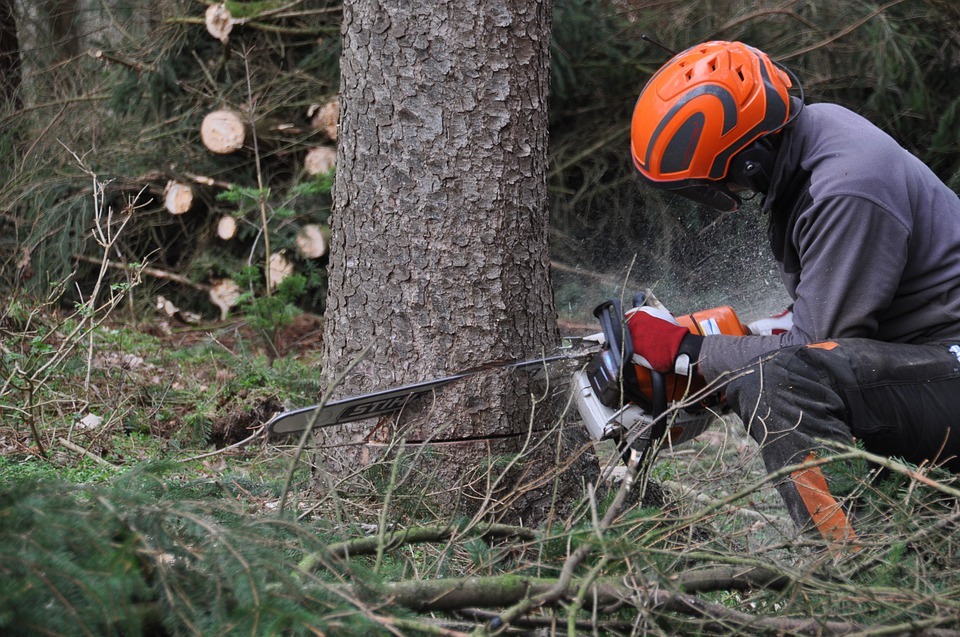During the year the time will come and the urge arrives to clean up. Be it around the house or in the garden. If you have been putting it off, now’s the time to do it. Fixing things, clearing the clutter to make sure there is no damage caused. You may want to do some DIY, you may want to cut the trees in your garden before winter for fear of storms making them fall. Maybe you have watched one of the many gardening shows on Tv or Netflix and fancy yourself to their standards or even going one better?! There is always room for improvement. It can be a healthy hobby, getting you into the outdoors, and also very rewarding when these tasks are completed. You will need to look into what kind of tools will suit you best for these tasks. What kind of job are you trying to do? Is there a specific better tool for the job you are looking to do? Let’s have a look and compare two different tools, which have similar functions, but are not quite the same.
What is a chainsaw?
A chainsaw can be a very handy tool to have. You may have an image of chainsaws being used in huge forests to cut down massive trees. However, they are also very practical tools to have around homes with gardens and trees for example. A chainsaw consists of a moving chain of sharp teeth that rotates along the edge of a blade constantly in the same direction. Which is away from the chainsaw motor. This is consistent, no matter which makes or kind of chainsaw it is. It is possible to put the chain on the opposite way, but it will not cut.
What is a reciprocating saw?
A reciprocating saw, another machine powered saw has become more common in use. The blade is constantly going backward and forward at speed enabling it to cut through a variety of materials. While quite popular on construction sites, home use has increased. They can be used on a variety of areas or surfaces. There is no flat base to the unit which helps squeeze it into and work in awkward places. Aside from cutting straight, circles can be made which could be handy for home decorations. Different types of blades can be bought, used, and changed depending on what is being cut through, for example, wood or metal.
What are they used for?
A chainsaw has many uses but is more so used in the industries of agriculture and wood. The cutting of crops or trees can be all easily achieved by using this equipment. Private home use has increased, such as in the trimming of trees. These tools can make a big difference, as you may be comfortable with using them yourself, rather than paying a contractor to work. Reciprocating saws are mostly used for demolition jobs and renovation works, be it industrial or commercial jobs. The ability of the reciprocating saw to handle materials like PVC, metal, nails, and wood makes it ideal for most jobs.
Different types
Contrary to possibly popular belief, chainsaws are not always gasoline powered. They are also available in the electric or battery-operated form, so that is 3 different variations for customers to choose from.
Chainsaws vary in price and there are numerous arguments as to which of the 3 power forms are better. There is a broader range of selection for reciprocating saws, with 6 choices available. Those being the cordless or corded options, mini or compact versions, pneumatic or plumbing & HVAC reciprocating saw. Again, as well as being a possible personal decision for ease of use, each of these has its advantages and disadvantages, so choose carefully what suits your needs best.
Be conscious of working safely
During the use of either of these tools, it is best to think and work safely so any accidents or harm can be avoided. Safety goggles should be worn to protect your eyes. Gloves can protect your hands from the constant holding and use of the equipment. Hold the equipment firmly with two hands ensuring a solid grip, safe from any slips or kickbacks. Always keep your hands away from the sharp blade! If you are using a corded version of the equipment, be aware of the location of the cord at all times. It is a possible dangerous trip hazard to you, but also possible to cut through, such as the efficiency of the tools. The equipment usually has some safety features of its own, which gives some peace of mind, but better to be cautious with the work at all times.

